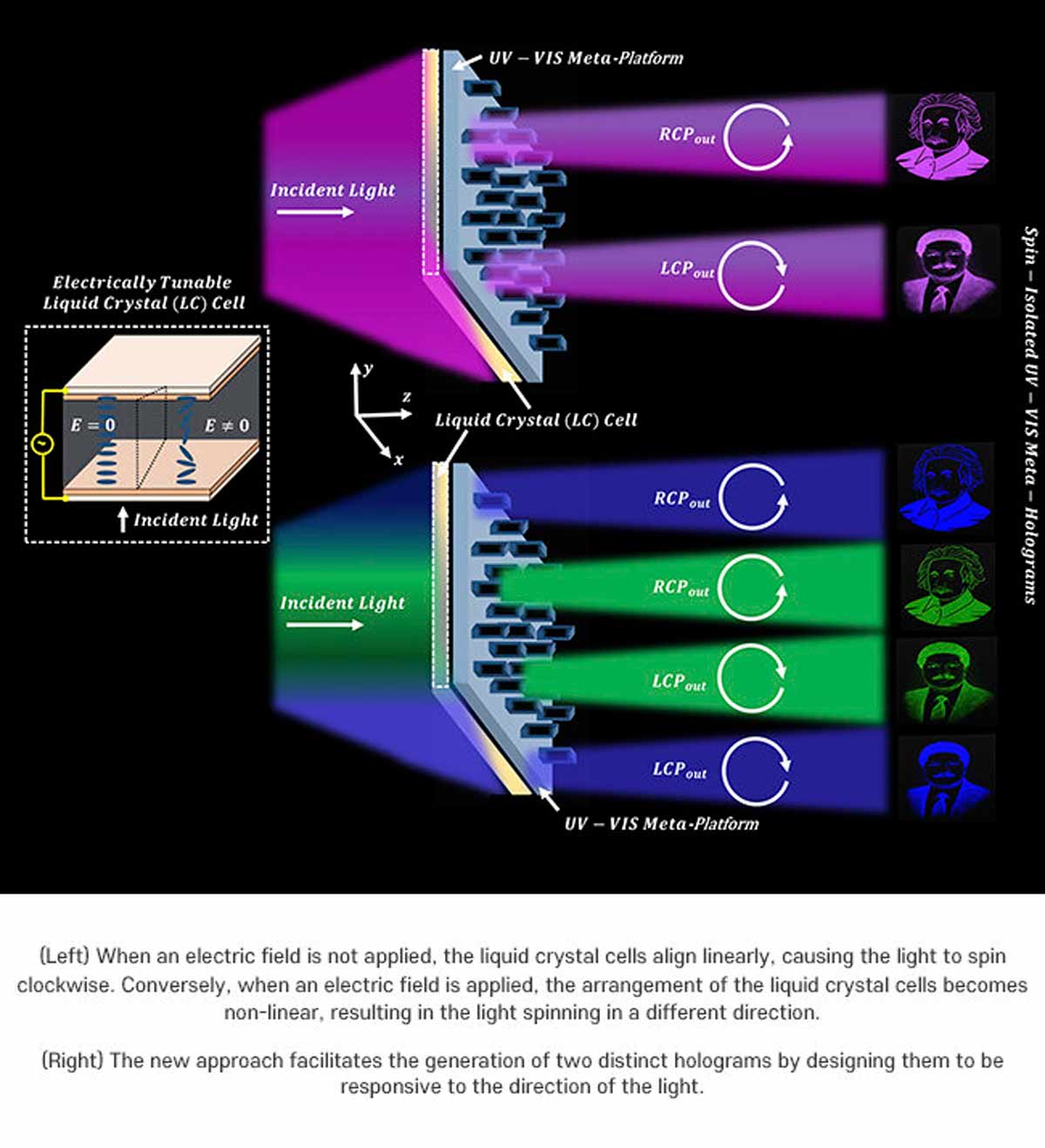A research team at Pohang University of Science and Technology (POSTECH) has made significant strides in the field of meta-holograms, pushing the boundaries of augmented reality (AR) and virtual reality (VR) devices. Meta-holograms are artificially engineered substances, known as metamaterials, that possess extraordinary properties not found naturally. These metasurfaces have been the focus of research due to their potential for creating holographic displays in portable devices. However, until now, their use has been limited to the visible spectrum. The team at POSTECH has successfully overcome this limitation, paving the way for a new era of holographic technology.
Led by Professor Junsuk Rho and Joohoon Kim from the Department of Mechanical Engineering, the research team has achieved a groundbreaking milestone by generating meta-holograms that can operate in both the visible and ultraviolet (UV) spectral regions. This achievement has been hailed as a significant advancement in the field and has been published in the prestigious journal Nanoscale Horizons.
Meta-Holograms: Breaking the Spectral Barrier
Traditionally, hologram generation has been confined to the visible spectrum due to the light absorption properties of objects in the ultraviolet range. Overcoming this challenge, the team at POSTECH introduced a thin layer of specially formulated gas compositions into the metasurfaces. This innovation has resulted in a remarkable enhancement of holographic transmission efficiency in both the visible and UV ranges, effectively expanding the capabilities of meta-holograms.
Encoding Dual Holographic Phase Profiles
In another noteworthy development, the research team successfully encoded two distinct holographic phase profiles onto a single metasurface. The polarization characteristics of light play a vital role in its propagation through space. Leveraging this phenomenon, the team’s approach enables the provision of holographic information for both clockwise circularly polarized light and counter-clockwise circularly polarized light. This breakthrough effectively doubles the amount of information that can be encoded onto metasurfaces, unlocking new possibilities for data storage and transmission.
Liquid Crystal: Enabling Practical Implementation
To facilitate practical implementation of meta-holograms, the research team incorporated liquid crystal, a widely used component found in cellphones and LCD displays. This integration allows for the convenient manipulation of light’s spin direction. Through their experiments, the team demonstrated that the absence or presence of an electric field can generate two types of holograms: type A and type B. The metasurface device engineered by the researchers enables the presentation of distinct holograms based on the control of the electric field, offering a versatile and adaptable holographic platform.
Promising Applications and Future Implications
Professor Junsuk Rho, the driving force behind this breakthrough research, highlighted the significance of their findings, stating, “This study overcomes the limitations associated with meta-holograms solely applicable to the visible regime. We have achieved the concurrent generation of meta-holograms in both the visible and UV domains.” The implications of this innovation extend beyond the realm of augmented reality, potentially finding applications in security technologies such as anti-counterfeiting measures, identifications, and passports.
The successful realization of meta-holograms in the UV range opens up new opportunities for a wide range of industries. With its potential to store and transmit information beyond the visible spectrum, this technology could revolutionize data security and communication systems. The research was made possible with the support of the STEAM Research Program and POSCO’s Industry-Academic Integrated Research Center.
As we move closer to a future where augmented reality becomes an integral part of our daily lives, advancements in meta-hologram technology will undoubtedly play a pivotal role in shaping that reality. With their breakthrough achievement, the research team at POSTECH has propelled the field forward, offering new possibilities for immersive experiences and groundbreaking applications in various sectors.
JOURNAL: Nanoscale Horizons | DOI: 10.1039/D2NH00555G


